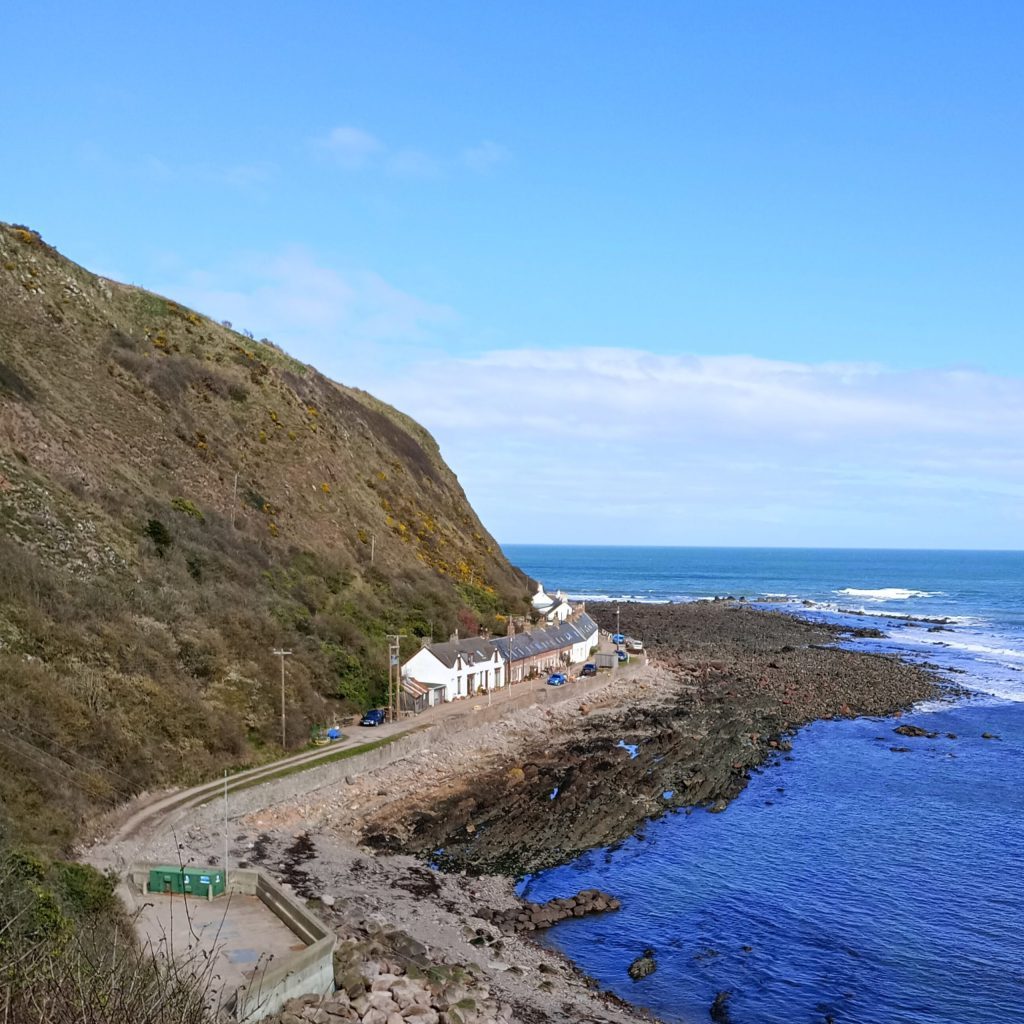
Berwickshire Coastal Path: Burnmouth to Berwick
The sun finally shone in what has been a damp and cloudy winter and spring and so we set off to walk another section of the Berwickshire Coastal Path. Having previously walked between St Abbs and Eyemouth, we were now up for a slightly longer challenge.
We took the bus from Berwick Upon Tweed over the Scottish Border and into Burnmouth to pick up the path south back to England. Alighting from the bus we took the right hand signpost to the coastal path. You then need to follow the signs for the coastal path to the left - it seems counter intuitive, but there are soon some steps down into the harbour which takes you on the route south.
The air was full of spring: resident birds like robins, wrens, dunnocks and chaffinches were singing out loudly from the gardens of Burnmouth as we enjoyed views across the pretty little village. Chiffchaffs have been back here now for a week and there onomatopoeic song accompanied us through much of the walk. We stopped at the sculpture in the harbour, one of four down this coast commemorating the lost lives of Scotland's largest fishing disaster in 1881. The Berwickshire ports lost 189 men during a devastating storm and these sculptures by Jill Watson show the anguish of the families on shore as they watched the fishing fleet flounder.
Today the sea was relatively calm, although a brisk north-easterly blew up as we walked, making some fairly impressive waves as we walked south. We were pleased to have the wind behind us.
Spring Colours
Whilst the soundscape was very definitely of spring, the colour palette felt a bit behind. Winter's brown and dull green still predominated, but their were pops of colour: spring green where hedges were coming into leaf and splashes of yellow. The gorse has been in flower most of the winter, but now celandines, coltsfoot and primroses were showing their wares in sheltered spots, delicate next to the beautiful, blowsy display of daffodils in the local verges.
This walk is easy to navigate as the path follows a narrow slither of land that fits between the A1 and the Edinburgh to London trainline to the west and the cliffs to the east. The only part of the route which is on the shoreline is in Burnmouth, so look out for the seashore birds here - we saw eider ducks, curlew, redshanks and oystercatchers. The only strenuous part of this walk is up the cliff at the end of the fishing village, so there is plenty of opportunity to look at for wildlife. In this section there is enough space between the path and the cliff top for a field, full of lambs enjoying today's sun.
Birds of the Cliffs
As we walked along the clifftops it was lovely to see that the cliff-nesting birds are returning. Plenty of herring gulls and common gulls interspersed with fulmars soaring in to their nest sites. Then the unmistakeable call of the kittiwake introduced us to their colony and, in among them two guillemots. I was pleased to have my binoculars because over the sea gannets were flying north towards Bass Rock and St Abb's Head. Groups, ranging from five to more than twenty, flying purposefully just above the waves, the sunshine picking out their white bodies above the dark blue sea.
Walking along the cliffs, a little gate takes us in to England and another sheep field. Then all the space between the railway and the cliffs are either taken by caravan sites or a golf course and eventually into Berwick Upon Tweed.
We had taken a picnic, but although there were plenty of seats in Burnmouth, there was nowhere else to sit along the route, so we hunkered down on the cliffs just after Marshall Meadows caravan site. We didn't go down the path signposted to the bothy, which might have given us a suitable lunch spot - we decided to save that for another day. If you don't want to take a picnic there are plenty of places to eat in Berwick at the end of the route - we can recommend Northern Edge Coffee, Atelier or fish and chips at Coull's.
Conclusion
A relatively easy walk with plenty of points of interest. You get a lovely view of Lindisfarne and Bamburgh Castle throughout the walk, although I think the curvature of the coast possibly gives you better views if you do the walk from south to north rather than the way we did it.
A very pleasant, easy to navigate




Distance: 11.2 km
Terrain: Mostly grass path
Difficulty: easy, but one hill
Date Walked: 24th March
Eider Ducks
Gannets
Curlew
Kittiwake
Coltsfoot
Celandines
Primroses

